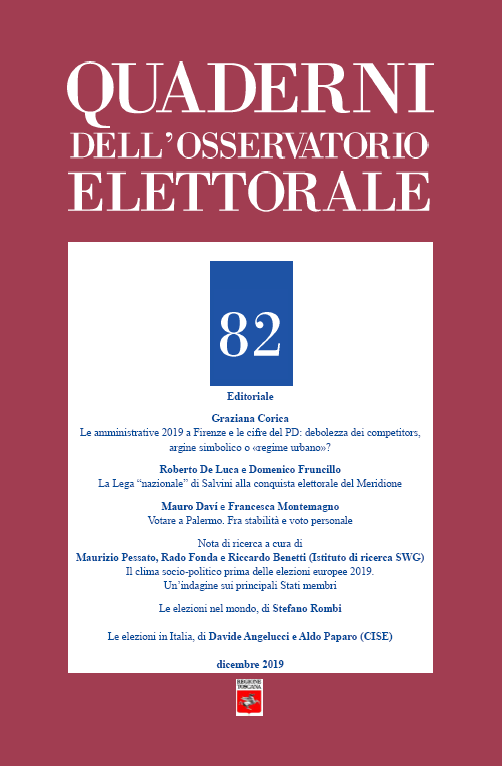Le amministrative 2019 a Firenze e le cifre del PD: debolezza dei competitors, argine simbolico o «regime urbano»?
Published 2019-12-30
Keywords
- Geographical approach,
- Municipal elections,
- Florence,
- Democratic Party and Center-left,
- Political traditions
How to Cite
Abstract
The 2019 municipal elections in Florence confirm the electoral success of the Democratic Party and the Mayor, Dario Nardella. The center-right candidate, Ubaldo Bocci, an entrepreneur and member of local catholic associations, collected 25% of the votes. The Five Star Movement, with Roberto De Blasi as mayoral candidate, and the left candidate Antonella Bundu got about 7% of the electoral preferences each.
In which areas of the city did the PD win? Is it possible establish a causal relation between voting behaviour, the neighbourhood and sociodemographic variables? To answer these questions, the article examines the electoral results through a geographical approach, based on the 72 «elementary areas» of Florence and other variables provided by ISTAT. This analysis identifies four macro-areas, distinguished for the different combinations of the presence of the political parties. Overall, the preferences collected by the PD, more than 50%, make difficult to found a link between the vote and the social background.
In order to understand the electoral success of the PD and of local politicians other factors, like political culture or specific contextual features, have to be taken into consideration. Indeed, from a qualitative perspective, this contribution suggests to consider Florence as a «urban regime», composed by several actors who share interests and visions about the growth of the city.

